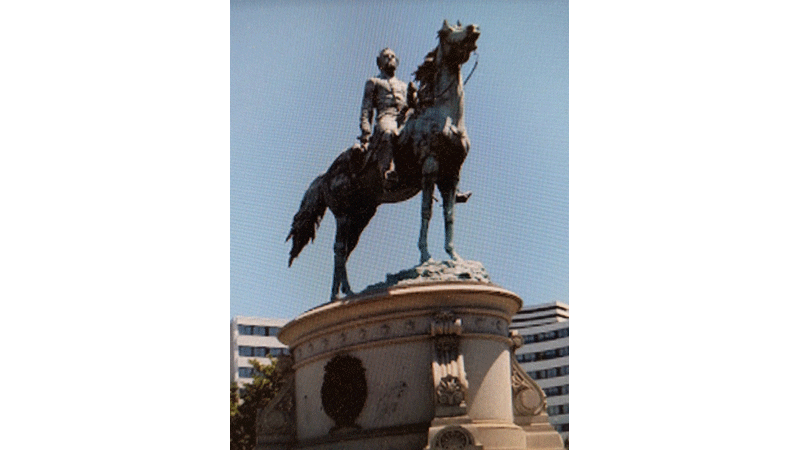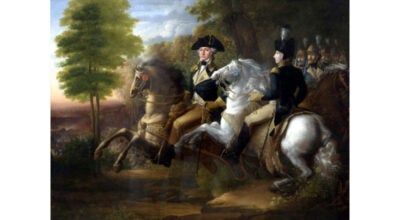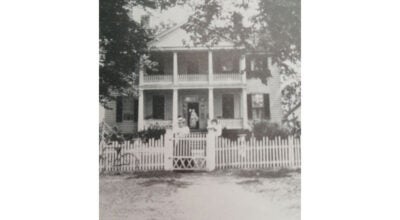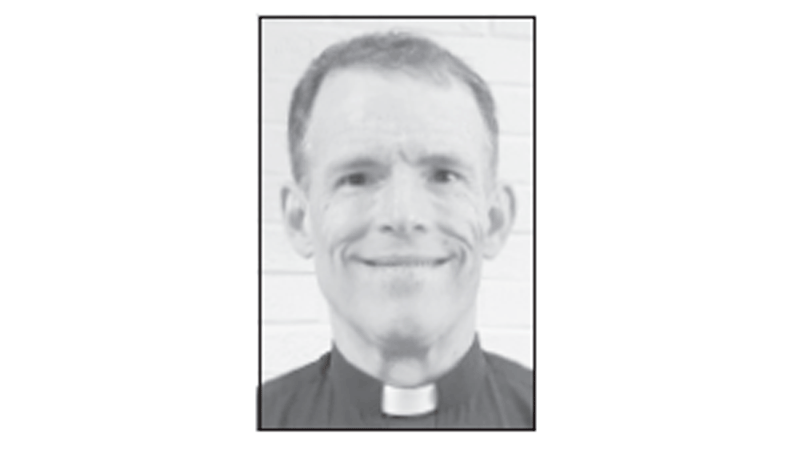Gen. George Henry Thomas
Published 12:03 pm Wednesday, February 8, 2023

- In Washington, D.C., the George H. Thomas Memorial is situated at a prominent location at a place named Thomas Circle. (Photo submitted by Clyde Parker)
|
Getting your Trinity Audio player ready...
|
George Henry Thomas was born on a farm near Newsoms, Southampton County, Virginia on July 31, 1816, a son of John Thomas and Elizabeth Rochelle Thomas. George had three sisters and two brothers. In 1836, John Y. Mason appointed Thomas to the United Sates Military Academy at West Point, New York. Among his closest friends at the academy were William T. Sherman and Stewart Van Vliet. In his second year, he was appointed a cadet officer and graduated 12th in a class of 42 in 1840. He was appointed a second lieutenant in Company D, 3rd U. S. Artillery. His first assignment with his artillery regiment began in late 1840 at Fort Lauderdale, Florida, in the Seminole Wars. From 1842 until 1845, he served in posts at New Orleans, Fort Moultrie in Charleston Harbor, and Fort McHenry in Baltimore.
In June 1845, his regiment was ordered to Texas to engage in the Mexican-American War where he led a gun crew at the battles of Fort Brown, Resaca de la Palma, Monterrey, and Buena Vista. Thomas was credited for having unusual “coolness and firmness” as a military combatant.
In 1849, Thomas was reassigned to Florida; but soon, in 1851, returned to West Point as a cavalry and artillery instructor, where he established a close professional and personal relationship with another Virginia officer, Lt. Col. Robert E. Lee, the Academy superintendent. Two of Thomas’s students who received his recommendation for assignment to the cavalry, J. E. B. Stuart and Fitzhugh Lee, became prominent confederate cavalry generals.
On Nov. 17, 1852, while still at West Point, Thomas married Frances Lucretia Kellogg, age 31, from Troy, New York. No children were born to this union. The couple remained at West Point until 1854. Thomas was promoted to captain on Dec. 24, 1853.
In the spring of 1854, Thomas’s regiment was transferred to California. In May of 1855, Thomas was appointed a major in the 2nd U. S. Cavalry by then Secretary of War Jefferson Davis. In October of 1857, Major Thomas assumed acting command of the cavalry regiment, an assignment he would retain for well over two years. On Aug. 26, 1860, during a clash with a Commanche warrior, Thomas was wounded by an arrow passing through the flesh near his chin area. He recovered from that. It was the only combat wound that Thomas suffered throughout his long military career.
Many of Thomas’s military associates and commanders and colleagues assumed that he would support his native state of Virginia in any future conflict. Thomas and Robert E. Lee maintained especially close ties with each other.
In November 1860, Thomas requested a one year leave of absence. His antebellum career had been distinguished and productive, and he was one of the rare officers with field experience in all three combat arms – infantry, cavalry and artillery.
On a trip home to Newsoms, he suffered a mishap at Lynchburg, falling from a train platform injuring his back. This led him to contemplate leaving military service and caused him much pain the rest of his life. He continued on to New York to visit with his wife’s family. Thomas stopped in Washington, D. C. and conferred with General-in-Chief Winfield Scott. Thomas, who was still on furlough, was concerned that many of the officers in the 2nd U. S. Cavalry harbored secessionist sympathies. At that time, he was considering a position as an instructor at Virginia Military Institute – but things changed. In March 1861, he turned down an unsolicited offer to serve in the Virginia State Militia. Instead, when he was called back to active service with the union after the surrender of Ft. Sumter — on April 14 — he immediately reported for duty.
At the outbreak of the Civil War, 19 of the 36 officers in the 2nd U. S. Cavalry resigned, including three of Thomas’s superiors – Albert Sidney Johnston, Robert E. Lee, and William J. Hardee. Many southern-born officers were torn between loyalty to their respective states and loyalty to their country. Thomas struggled with the decision but opted to remain with the United States. His northern-born wife probably helped influence his decision. In response, it has been told, his family turned his picture against the wall and never spoke to him again.
Thomas was promoted in rapid succession: to the rank of Lt. Colonel in April of 1861, replacing Robert E. Lee; to the rank of colonel, in May of 1861, replacing Albert Sidney Johnston; and to the rank of brigadier general, the following August. In the First Bull Run Campaign, he commanded a brigade under Major General Robert Patterson in the Shenandoah Valley of Virginia, but all of his subsequent assignments were in the western theater of the war during which he was noted for his successful combat roles.
Of particular note, was the fact that he was responsible for the first union victories in the war, at Mill Springs in Kentucky, and served in important subordinate commands at Perryville and Stones River. His stout defense at the Battle of Chickamauga in 1863 saved the Union Army from being completely routed, earning his most famous nickname “the Rock of Chickamauga.” He followed soon after with a dramatic breakthrough on Missionary Ridge in the Battle of Chattanooga. In the Franklin-Nashville Campaign of 1864, he achieved one of the most decisive victories of the war, destroying the army of Confederate General John Bell Hood, his former student at West Point, at the Battle of Nashville.
Thomas eventually attained the rank of Major General (two stars). President Andrew Johnson offered Thomas the rank of lieutenant general (three stars) – with the intent to eventually replace Grant, a republican future president, with Thomas as general-in-chief but the ever-loyal Thomas declined and asked the senate to withdraw his name. Instead, he asked for assignment to command the Military Division of Pacific with headquarters at the Presidio of San Francisco. He died there of a stroke on March 28, 1870. He was buried in Oakwood Cemetery, in Troy, New York. None of his relatives attended the funeral. He did not return to Newsoms, Virginia.
In Washington D. C., the George H. Thomas Memorial is situated at a prominent location at a place named Thomas Circle.
CLYDE PARKER is a retired human resources manager for the former Franklin Equipment Co. and a member of the Southampton County Historical Society. His email address is magnolia101@charter.net.





